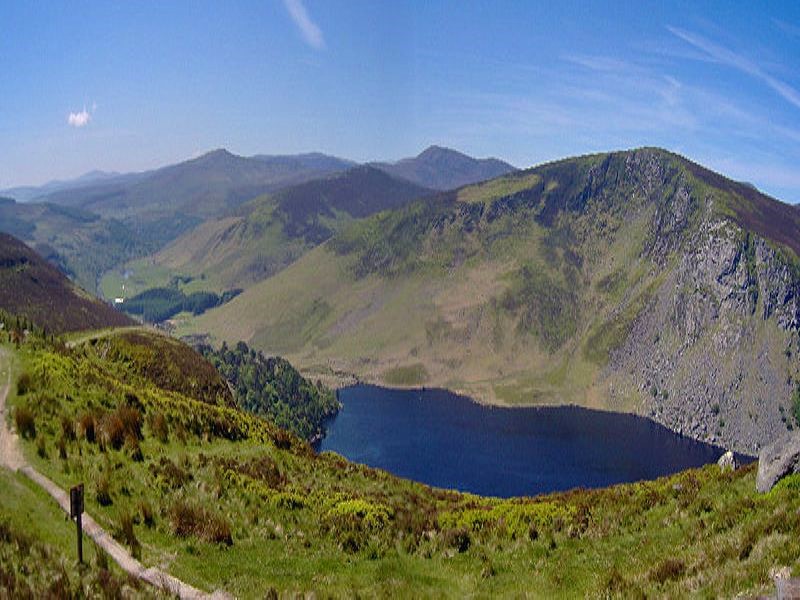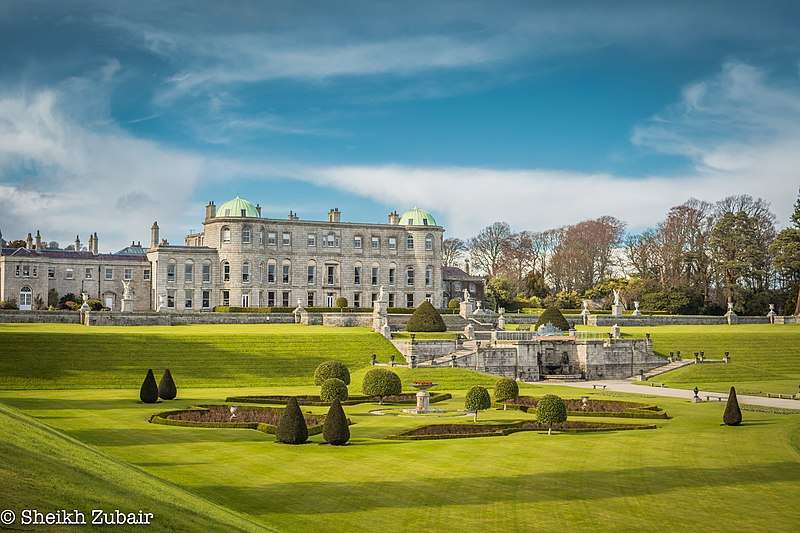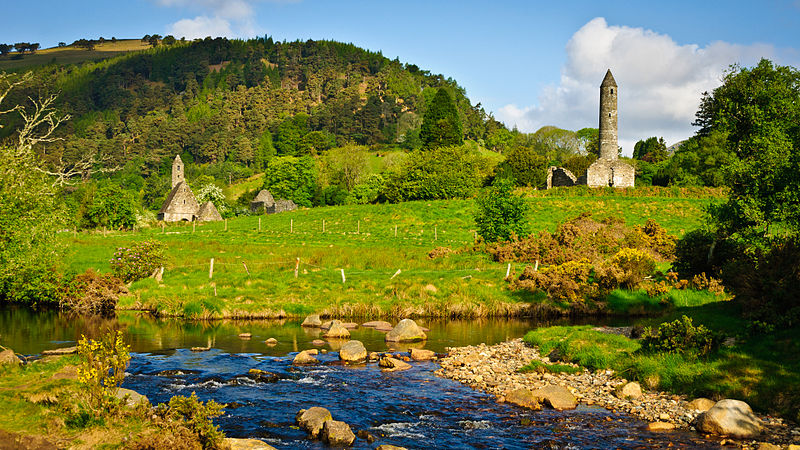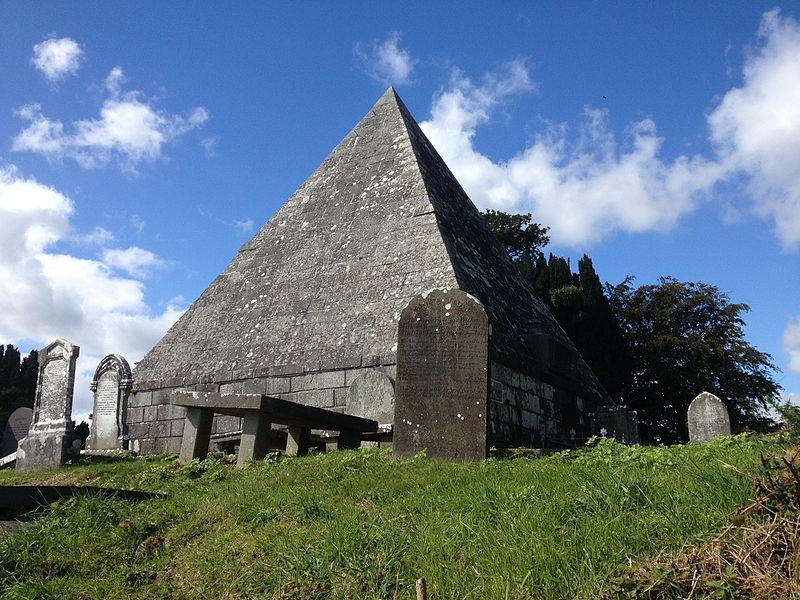Despite its proximity to the capital city of Dublin, Wicklow remains unspoilt and one of the most naturally scenic areas in Ireland. A few days in Wicklow is enough to refresh and recharge you as you take in the breathtaking scenic views, visit castles or stately homes, climb mountains, soak up the sun in a hidden beach, visit monastic sites and even a pyramid. Take a look at our list of the best things to do in Wicklow and see how many sights you can cross out on your trip to the city.
READ MORE: Best Hotels In Wicklow Ireland
Things you'll find in this article
12 Things To Do in Wicklow, Ireland (For 2025)

1.Wicklow Gaol
The current Wicklow Gaol may have been built in the 1840s, but there has been a jail on this site since 1702. One of the more thought-provoking and sobering experiences you’ll have while in an Irish town, a visit here remains to be one of the best activities to do in Wicklow.
The original gaol dungeon is open again for the first time in over 100 years and tells an interesting story of crime, cruelty, exile, and misery. A tour takes you through stories of harshness of prison life in the 18th Century, the passion of the 1798 rebellion, the cruelty of the transport ships and hope of a new life in Australia as told by the wonderful staff with their classic Irish humour and their knowledge of Irish history and the Wicklow Jail in particular.
Opening Hours
Open Daily
10.30am -16.30 pm 1st February to 31st November
11 am to 3.30pm-1st December to 31st January
Admission Fee
Adult €9.50
Child €6.50
Family €26
Student/OAP €8.00
Contact Information
Address: Kilmantin Hill, Wicklow Town, Co. Wicklow, Ireland.
Phone:+353 (0)404 61599
Email:info@wicklowshistoricgaol.com
Learn more about this historic site—book here.
2.Glendalough
Close to Dublin and a favorite day trip destination, Glendalough has two of the most beautiful lakes in Ireland that’s surrounded by greenery and mountains, which is why its called ‘Valley of Two Lakes’. Built inside a glacial valley, it is one of the best places to visit in Wicklow especially if you love walking, hiking and taking photos.
Glendalough is also a monastic settlement, which was built in the 6th Century by St. Kevin, which looks like it hasn’t changed all that much in 1,500 years. The Glendalough boasts of a series of impressive remains set against a backdrop of the picturesque Irish countryside.
3.Silver Strand Beach
Located just outside of Wicklow town is a hidden gem situated on a wonderful campsite called Wolohan’s, is the Silver Strand Beach.
Said to be one of Ireland’s best beaches, this area may be small compared to the other more popular beaches but the golden, perfectly smooth and silky sand surrounded by cliffs from both sides gives that feeling of having the place to yourself, quietly tucked in your very own pocket paradise.
4.Lough Tay
The small but beautiful lake of Lough Tay is located in the Wicklow Mountains in County Wicklow. It is also called ‘the Guinness lake’ not only because its northern coastline is part of an estate belonging to the Guinness family; but more because part of the lake is edged with a white sand beach along with the dark peaty water, a sight that creates a striking similarity to a pint of Guinness.
Lough Tay is also between the mountains of Djouce and Luggala and fed by the Cloghoge River, which then drains into Lough Dan to the south. If you’re doing the Wicklow Way or driving through R759, the lake offers a stunning view from above, and definitely one of the best places to see in Wicklow.
5.Powerscourt Waterfall
The picturesque Powerscourt Waterfall is the highest in Ireland, at 121-metres high, ranking at 687 in the world. One of the best places to visit when in Wicklow, it is nestled in the Powerscourt Estate and sits on the eastern slopes of the Wicklow Mountains five kilometers west of Powerscourt House. During the 19th century, the grounds on the way to the falls were planted with sequoias, beeches, oaks, and pines, which later matured into giants.
The parkland is also home to a herd of sika deer that was introduced in 1858. Near the base of the waterfalls, there’s a children’s playground and picnic area for those who want to relax and enjoy a scenic view of this natural wonder.
Opening Hours
January/February/November/December 10.30am-4.00pm (last admission-3.30pm)
March/April/September/October 10.30am -5.30pm (last admission-5pm)
May/June/July/August 9.30am-7.00pm (last admission-6pm)
Closed two weeks before Christmas
Admission Fee
Adults €6, Student/OAP €5.50
Child (U12) €3.50, Children (U2) Free
Family Ticket €16.00 (2 adults & up to 3 children)
Contact Information
Address: Powerscourt Estate, Enniskerry, Co. Wicklow, Ireland
Phone:+353 (0) 1 204 6000
Email:info@powerscourt.net
6.Powerscourt Estate
The Powerscourt Estate gardens are the ideal place for summer walks and one of the top attractions in Wicklow county. It was built during the 1730s, ordered by Richard Wingfield, with the German Richard Kassels as the architect.
The house was destroyed by fire in 1974 and was abandoned for two decades until its renovations in the mid-90s. Meanwhile, the gardens were planted in the 19th century after Mervyn Wingfield completed a tour of Europe’s great palaces, like Versailles and Schönbrunn Palace in Vienna.
The Powerscourt Gardens & House has so much to offer, and during a stroll around, you will see the Italian gardens dotted with statues, the Tower Valley with a Medieval folly, Japanese gardens, walled gardens, Triton Lake and the Wingfield and Slazenger family’s pet cemetery.
Opening Hours
Daily: 9.30am-5.30pm (Last entry 5pm)
Gardens close at dusk in Winter (Last entry during winter is 30 minutes before dusk)
The Gardens are open year-round and only close December 25th & 26th
Admission Fee
Adult: €10.50
Student: €8.50
Senior: €8.50
Child (U13) €5.00
Child (U5) Free
Family Ticket €25.00 (2 adults & up to 3 children) SAVE €11.00 with our family ticket.
Contact Information
Address: Powerscourt Estate, Enniskerry, Co. Wicklow, Ireland.
Phone: + 353 (0) 1 204 6000
Email:info@powerscourt.net
7.Great Sugar Loaf
The Great Sugar Loaf, also known as the ‘Big Sugar Loaf’ or ‘the Sugar Loaf’, is a beautiful hill in east County Wicklow. Its conical shape makes it look like a volcano, but is actually made up of Cambrian quartzite and is an ancient sedimentary deposit on the seabed that has resisted erosion.
For centuries this 500-meter hill was a Wayfinder for pilgrims and scholars traveling to and from the Glendalough monastery high in the adjacent Wicklow mountains. A relatively easy hike despite its daunting slopes, the summit of the Great Sugar Loaf offers a stunning view of the sea, the Wicklow Mountains and Dublin’s sprawl, making it one of the best places to see in Wicklow.
8.Wicklow Way
Whether you’re the active type who enjoys challenging trails or simply someone who likes exploring a locale by walking or cycling, the Wicklow Way is for you.
A 129-kilometer trail that cuts through the beautiful Wicklow Mountains, it starts at Marlay Park in the southern suburbs of Dublin then goes through County Wicklow, up to the village of Clonegal in County Carlow.
Wear your favorite hiking shoes or take your bike with you as you navigate the Wicklow Way, designated as a National Waymarked Trail by the Irish Sports Council. It usually takes days to complete the trail but even a few hours here is worth it as it will take you through one of the most scenic routes in Ireland.
9.Wicklow Mountains
The Wicklow Mountains are the largest continuous upland region in Ireland. It is one of the most famous in the country and a part of a National Park that spans part of the mountain range that extends over most of County Wicklow.
A hike up the mountain is one of the best things to do in Wicklow on weekends, with its gentle winding trails and lush forestry. Its upper slopes have beautifully rounded peaks and the whole area contains heath and bog.
On your hike, you will also encounter beautiful streams that run into the deep lakes of the wooded valleys all the way into the surrounding lowlands.
Check this day tour that includes a visit to Wicklow Mountains from Dublin.
10.Russborough House
A fine example of Palladian architecture, Russborough House is located between the towns of Blessington and Ballymore Eustace. Said to be the longest house in Ireland, its frontage measures 210 meters. It was built between 1741 and 1755 and designed by Richard Cassels for Joseph Leeson, the 1st Earl of Milltown.
An ostentatious stately house, with palatial grounds and artwork that would be at home in the Louvre in Paris, a visit to Russborough House is one of the best things to do in Wicklow.
Marvel at the ornate plasterwork on the ceilings and its collections of paintings, antique furniture, silver, porcelain, and tapestries. You can also sample some “haute cuisine” or go straight for the tea rooms and have some high tea.
Opening Hours
Guided House Tours
January – February: closed
March: Mon-Sun 12 p.m.-3.00 p.m. (on the hour) |Bank Holiday Weekend: 10 a.m.-5 p.m (on the hour)
April: Mon-Fri 12:00 p.m-3:00 p.m (on the hour) |Sat, Sun & Bank Holiday Monday 10:00 a.m.-5:00 p.m. (on the hour)
May – September: 10:00 a.m-5:00 p.m. (on the hour)
October: Mon-Fri 12:00 p.m-3:00 p.m (on the hour)|Sat, Sun & Bank Holiday Monday 10:00 a.m. – 5:00 p.m. (on the hour)
November– December: Mon-Sun 12 p.m.-3.00 p.m. (on the hour)
Admission Fee
Guided House Tour and Exhibition Centre
Adult: €12
Senior Citizen/Student: €9
Child: €6
Children under Five Years: Free
Family (Includes Maze Entry for Two Adults and Four Children Under 16 Years): €30
Contact Information
Address: Blessington, Co. Wicklow, Ireland W91 W284
Phone:+353 (0)45 865239
Email:info@russborough.ie
11.The Black Castle
Offering a stunning view of the town and the coast of North Wicklow from where it stands, the Black Castle ruin is still perched majestically on a rocky headland at the eastern side of Wicklow town.
The Vikings used to be active in the Wicklow Town area from around 795 and in 834, and they fortified a rocky headland at the mouth of the Vartry River in Wicklow town.
A castle was eventually built there which is now the Black Castle. Between 1295 and 1315 the Castle was attacked and burnt down twice by the local O’ Byrne Clan. There isn’t much left of the old building, but you can easily walk right up to it and ponder its turbulent history as you take in the view of the nearby town.
12.Howard Mausoleum Pyramid
Described by English writer Sir John Betjeman as “the largest pyramid beyond the banks of the Nile,” the Howard mausoleum, which is about 30 feet tall, is hard to miss among the somber granite headstones of Old Kilbride Cemetery. It has unintentionally become one of Wicklow’s attractions, and worth a visit for its history.
Eighteen deceased members of the Howard family are in this Egyptian pyramid on the Irish coast which was constructed in 1785 during the Neoclassical era.
The epitaph says that the mausoleum was placed there in memory of ancestors who died a century prior and for generations of Howards to come. The pyramid has 33 slabs for coffins, but only half the slots are occupied. The mausoleum was sealed without explanation in 1823, and it has been covered in ivy and plant life since.
Looking for a stay in Wicklow Ireland?
Check available hotels here:
[mc4wp_form id=”2151″]
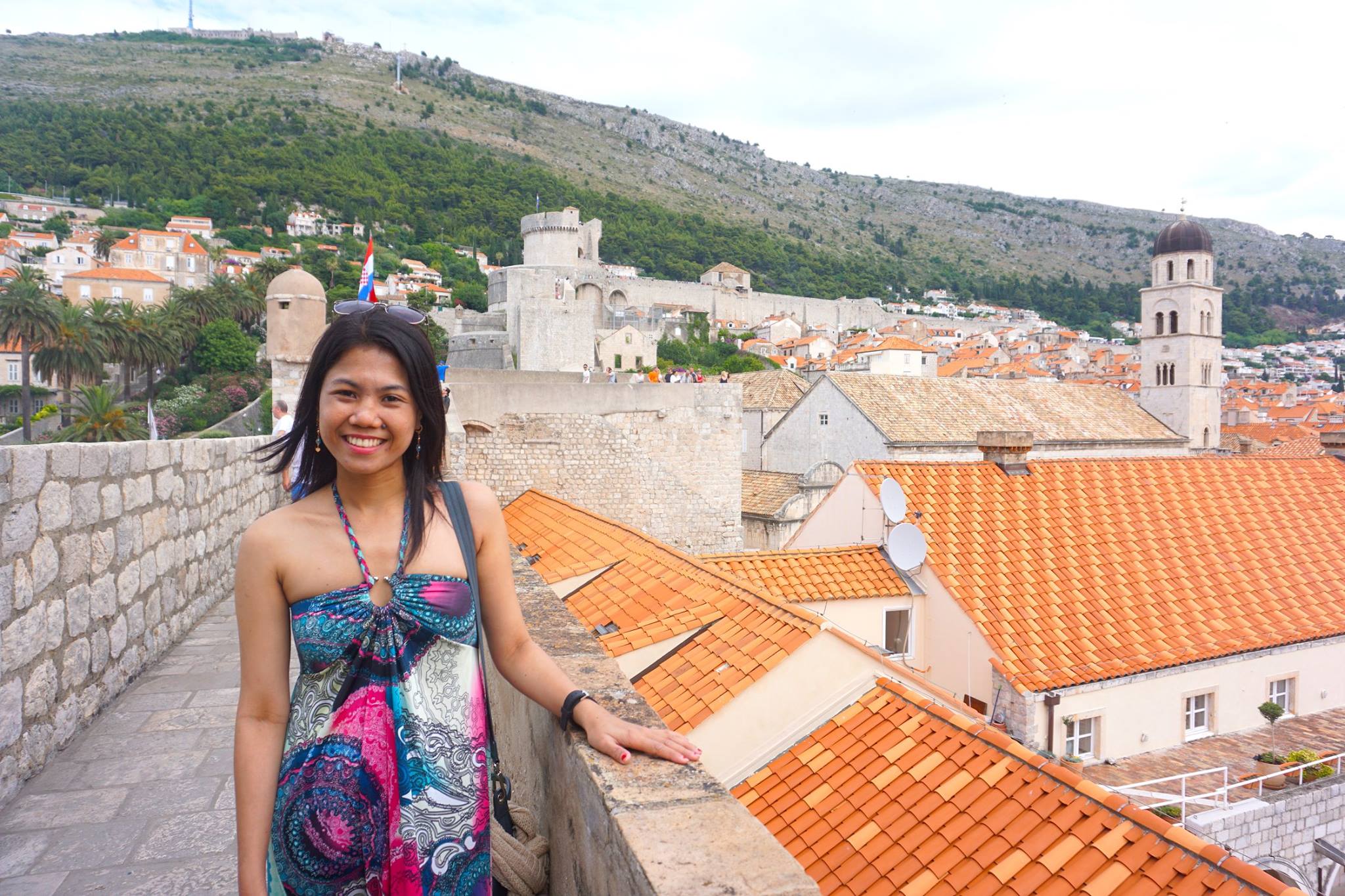
Hi, I’m Christine – a full-time traveler and career woman. Although I’m from the Philippines, my location independent career took me to over 60 countries for the past 12 years. I also lived in 4 continents – from the Caribbean, South East Asia, Africa and now in Europe. But despite living in several countries, my love for Ireland remains the same. A country that had been a part of my life since I was 14 because of my love for Irish music and bands. Ireland Travel Guides was born because of this passion and hopefully, in some little ways, this website will be able to help you on your next trip to Ireland.



